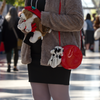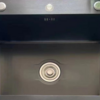Daido Moriyama - Contemporary Legend
Even though Moriyama's operate is properly identified in Nippon exactly where he is 1 of the country's major photographers, his photography has only been sporadically and incompletely exhibited outside Japan, and it has not received the full critical congratulation it so richly deserves.
Born in the port city of Osaka in 1938, Moriyama turned to photography at the age of twenty-one particular and moved to Tokyo to function with the eminent photographer Eikoh Hosoe. Early in his profession, Moriyama became acquainted with the operate of each William Klein and Andy Warhol. We discovered bioresonantie behandeling by searching the Internet. He appreciated their new vision and transformed it by way of his own personal point of view. Worth Reading includes extra information concerning where to deal with it. The power and dynamic modernity Moriyama located in the emotional, even hostile photos Klein made of his native New York delighted the young Japanese photographer, as did the perception of a voyeuristic media culture in Warhol's operate.
Moriyama's photos are taken in the streets of Japan's main cities. Produced with a small, hand-held camera, they reveal the speed with which they had been snapped. Typically the frame is deliberately not straight, the grain pronounced, and the contrast emphasized. Amongst his city images are those shot in poorly lit bars, strip clubs, on the streets or in alleyways, with the movement of the subject making a blurred suggestion of a kind rather than a distinct figure.
Moriyama's style was also portion of this intense period in Japanese art. A lot of the perform made in Japan in theater, film, literature, art, and photography seems radical nowadays as it represented a clear disjunction from the previous. Japanese artistic production of the 1960s and 1970s was deeply affected by the American occupation and its conflicting messages of democracy and handle, of peaceful coexistence, and of the sturdy American presence in Asia throughout the Vietnam War.
Radical artists, including Moriyama, sought a firm break with the highly regulated Japanese society that was accountable for the war, as well as an affirmation of the vitality of a pre-modern day culture that was especially Japanese. Hence, the photos Moriyama took of the American Navy base Yokosuka -- reflecting the freedom he saw there -- and the stray dog close to the Air Force base at Misawa acknowledge each the exhiliarating newness of the modern day encounter and its rawness.
In the early 1980s, his function moved away from the ambiguity and graininess of his earlier photographs toward a bleaker, a lot more distinct vision, as evidenced in the Light and Shadow series.Moriyama stretches the boundaries of photography and peers into the dark and blurry places that scare us. If you think any thing, you will certainly wish to check up about bioresonantiebehandeling. Moriyama delivers wonderful gritty black and white photographs examining post WWII Japanese Culture.
His most recognized image, Stray Dog, (1971) is clearly taken on the run, in the midst of bustling, lively street activity. The representation of the alert, wandering, solitary, but eventually mysterious animal, is a powerful expression of the important outsider. It is an crucial reflection of Moriyama's presence as an alert outsider in his own culture..






